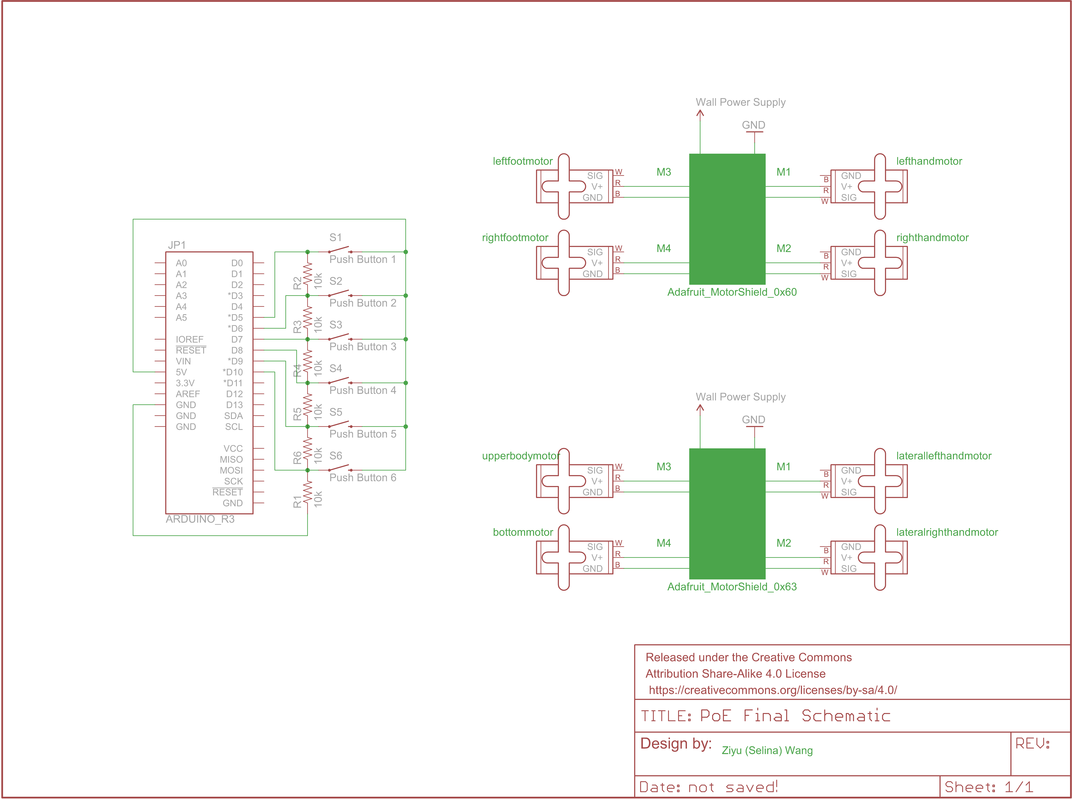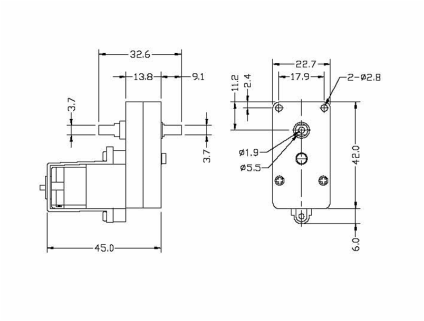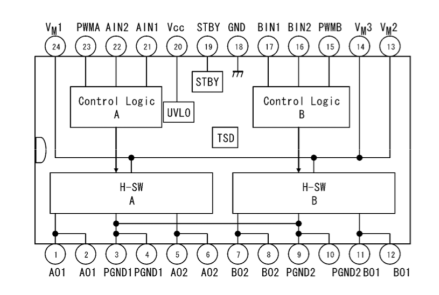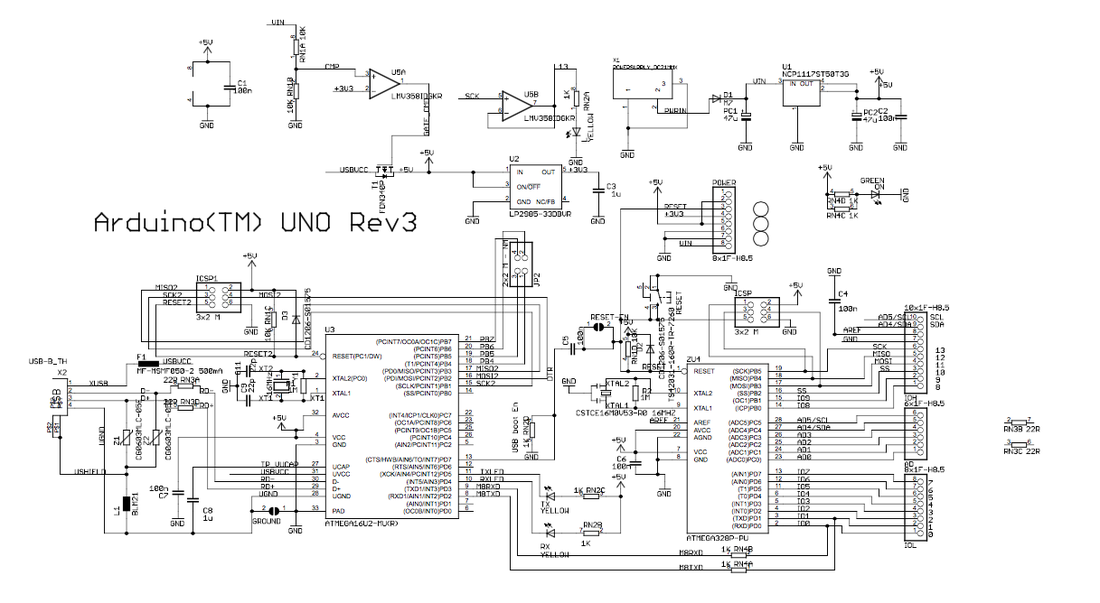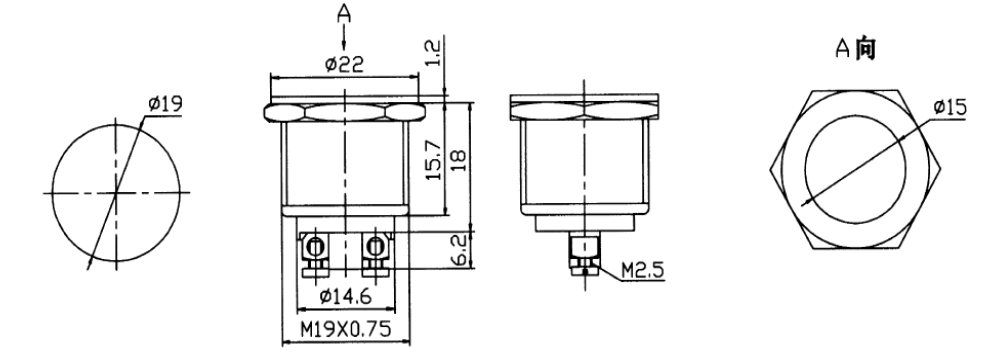The Basics
The electrical component of this project is comprised of one Arduino Uno, 2 Adafruit motorshields, 8 motors, a breadboard with circuit, and 6 buttons. Mounted on the motor plate in the case, the Arduino is used to control the behavior of the marionette; it receives the signal from the buttons, processes it, and then tells the appropriate motors to run, via the motorshields, for each motion. The breadboard is used to provide the needed circuits for the buttons to interface with the Arduino. Additionally, a power supply is used to provide power to the Arduino and motorshields. We used motors because they are able to turn more than 360 degrees; in hindsight, using servos with a removed limiter would have led to more accurate motion control. However, by the time of this decision we had made other design choices in the construction of our project's casing that we believed would make using motors the best option.
| poefinalschematic.png | |
| File Size: | 390 kb |
| File Type: | png |
Component Specs
Vigor Precision Motors - Model BO2 (output by one side). Notable characteristics include operating voltage between 3-12 V (direct), and the integrated gearbox. Specs for Motors.
Adafruit Motor/Stepper/Servo Shield for Arduino v2 Kit (v 2.3): Notable characteristics include stackability (multiple motor shields can be used at once), compatibility with Arduino Uno (and many other Arduino models), 12 V power to motors, and the ability to run 4 motors off of every motor shield. Specs for Adafruit Motor Shields.
Arduino Uno: Features include ability to integrate with buttons and control motorshields. 5 V power supply and 5V input/output capability. Specs for Arduino Uno.
Normaly Open (NO) Push Buttons: Notable characteristics include operation up to 125V and 4A/250V and 2A, screw terminals, and the fact that they screw into their sockets, removing a need for fixatives. Specs for NO Push Buttons.
Breadboard and small gauge wire: There's nothing especially special about this, so feel free to use whatever you've got/you like working with. We've included links to components similar to those used in our project (we got these components from our college's stockroom). Specs for breadboard. Specs for wires.
Adafruit Motor/Stepper/Servo Shield for Arduino v2 Kit (v 2.3): Notable characteristics include stackability (multiple motor shields can be used at once), compatibility with Arduino Uno (and many other Arduino models), 12 V power to motors, and the ability to run 4 motors off of every motor shield. Specs for Adafruit Motor Shields.
Arduino Uno: Features include ability to integrate with buttons and control motorshields. 5 V power supply and 5V input/output capability. Specs for Arduino Uno.
Normaly Open (NO) Push Buttons: Notable characteristics include operation up to 125V and 4A/250V and 2A, screw terminals, and the fact that they screw into their sockets, removing a need for fixatives. Specs for NO Push Buttons.
Breadboard and small gauge wire: There's nothing especially special about this, so feel free to use whatever you've got/you like working with. We've included links to components similar to those used in our project (we got these components from our college's stockroom). Specs for breadboard. Specs for wires.
